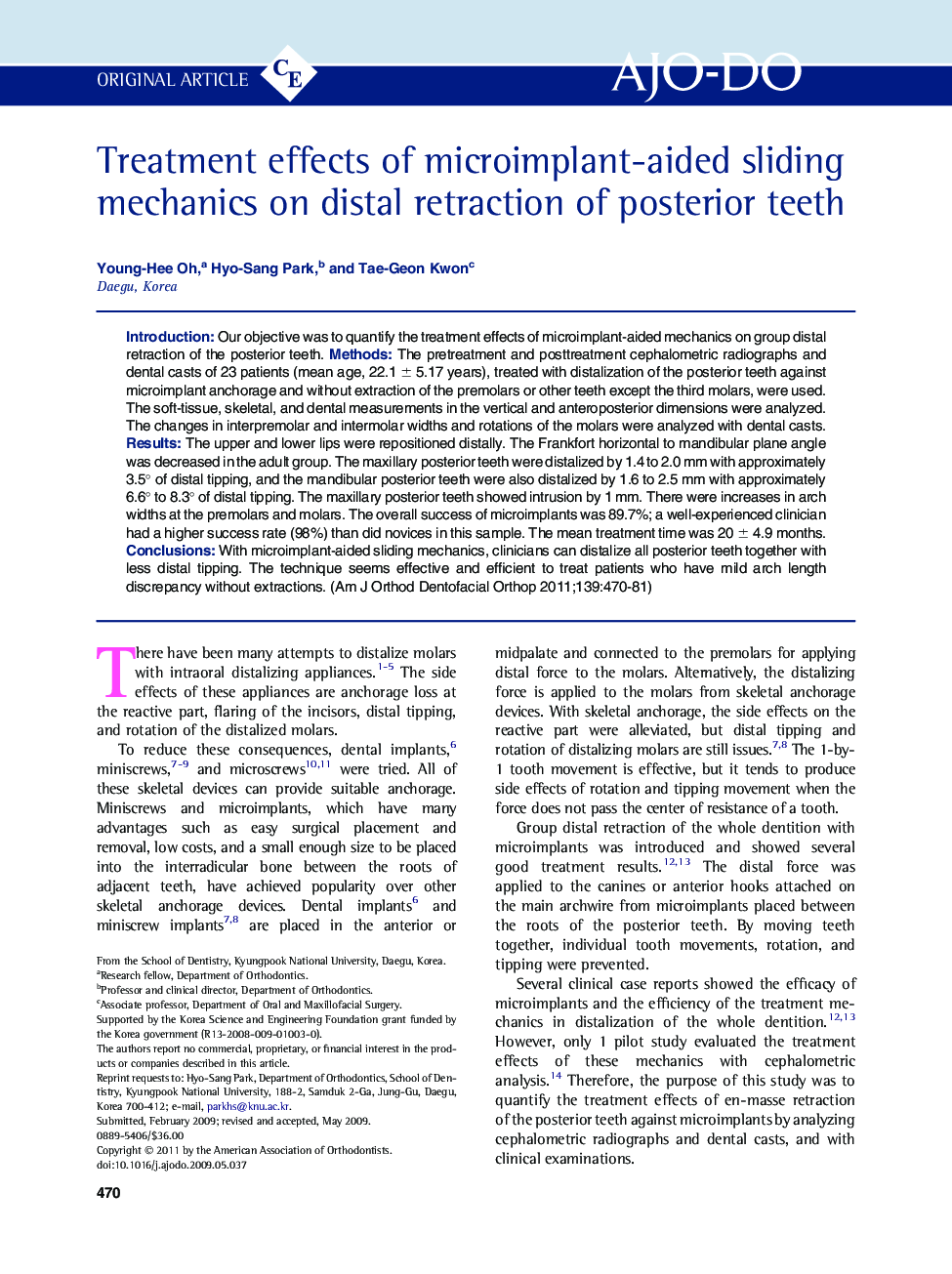| Article ID | Journal | Published Year | Pages | File Type |
|---|---|---|---|---|
| 3117703 | American Journal of Orthodontics and Dentofacial Orthopedics | 2011 | 12 Pages |
IntroductionOur objective was to quantify the treatment effects of microimplant-aided mechanics on group distal retraction of the posterior teeth.MethodsThe pretreatment and posttreatment cephalometric radiographs and dental casts of 23 patients (mean age, 22.1 ± 5.17 years), treated with distalization of the posterior teeth against microimplant anchorage and without extraction of the premolars or other teeth except the third molars, were used. The soft-tissue, skeletal, and dental measurements in the vertical and anteroposterior dimensions were analyzed. The changes in interpremolar and intermolar widths and rotations of the molars were analyzed with dental casts.ResultsThe upper and lower lips were repositioned distally. The Frankfort horizontal to mandibular plane angle was decreased in the adult group. The maxillary posterior teeth were distalized by 1.4 to 2.0 mm with approximately 3.5° of distal tipping, and the mandibular posterior teeth were also distalized by 1.6 to 2.5 mm with approximately 6.6° to 8.3° of distal tipping. The maxillary posterior teeth showed intrusion by 1 mm. There were increases in arch widths at the premolars and molars. The overall success of microimplants was 89.7%; a well-experienced clinician had a higher success rate (98%) than did novices in this sample. The mean treatment time was 20 ± 4.9 months.ConclusionsWith microimplant-aided sliding mechanics, clinicians can distalize all posterior teeth together with less distal tipping. The technique seems effective and efficient to treat patients who have mild arch length discrepancy without extractions.
